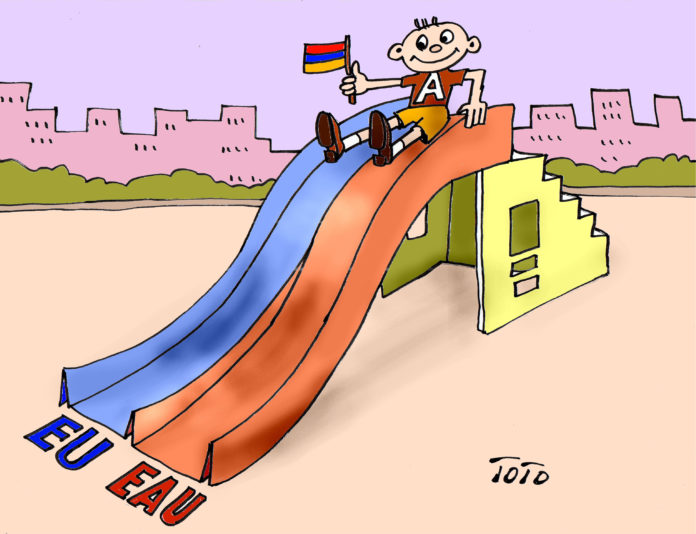By Edmond Y. Azadian
Armenia did not sign an agreement with the European Union (EU) four years ago when it first had the chance, but an agreement was signed November 24 in Brussels, on the sidelines of the European Partnership Summit attended by delegations from 28 European Union countries and representatives from Armenia, Georgia, Moldova, Ukraine, Azerbaijan and Belarus.
Despite the fact that Armenia made a U-turn at the time, the EU did not punish Armenia or treat it negatively. On the contrary, it continued friendly relations with Armenia because it was in pursuit of a greater goal; and as we see, this time around, several republics of the former Soviet Union are involved in this new deal, which officially is “not directed against the interests of any particular party” but everyone is aware that it is intended to isolate Russia.
At the signing ceremony, Donald Tusk, the president of the European Council, used the opportunity to criticize Moscow over its actions in Crimea. In addition, Prime Minister Theresa May of Britain did not mince her words in defining the role of the agreement as it pertains to limiting Russia.
The agreement will give Armenia less than what was offered in the previous deal, which was to become part of “deep and comprehensive free trade area.”
It would not be wise to delve into the legal implications of the agreement, without studying the 350-page document, but we can discuss the public fallout. By enlisting countries from the Russian sphere of influence, the EU is doing the US’s bidding as far as antagonizing Russia is concerned.










